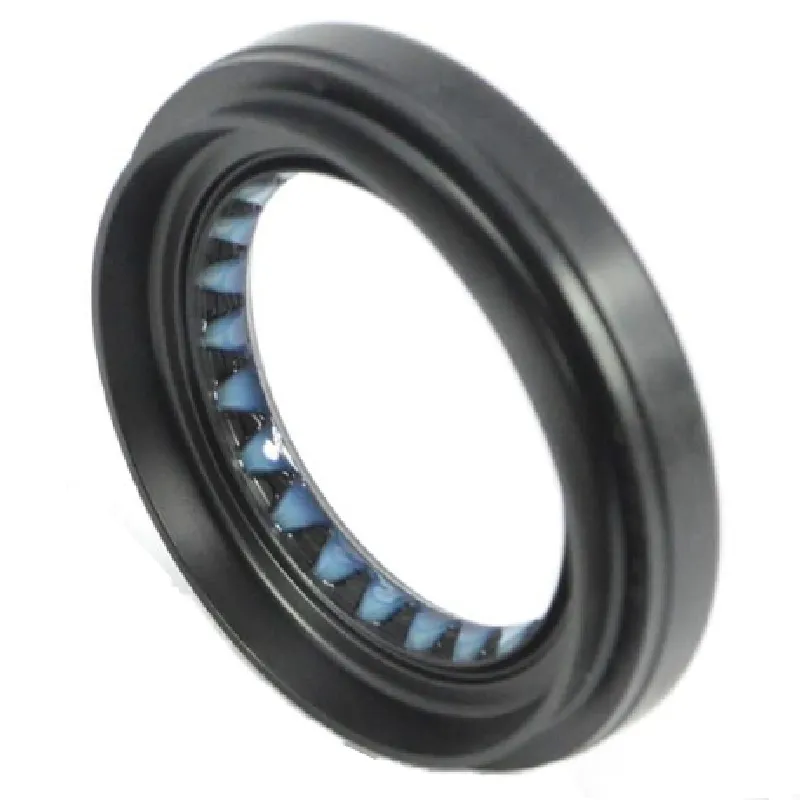Understanding the Importance of Oil Seal Springs in Mechanical Applications
Understanding Oil Seal Springs Importance and Application
Oil seal springs are critical components in various mechanical systems, primarily serving to maintain the integrity of seals under operational conditions. They are essential in preventing leaks, thus ensuring the efficient functioning of equipment ranging from automotive engines to industrial machinery.
What Are Oil Seal Springs?
Oil seal springs are typically made of resilient materials, designed to exert pressure on the sealing lip of an oil seal. Their primary role is to ensure a tight fit against the rotating shaft, which minimizes the risk of fluid leaks. The spring effect maintains consistent pressure on the seal regardless of variances in temperature and pressure, which can occur during operation.
The design of oil seal springs can vary based on specific applications and requirements, but they primarily fall into two categories coil springs and wave springs. Coil springs are the traditional choice, known for their reliability and stability. Wave springs, on the other hand, offer a more compact design, which can be beneficial in space-constrained applications.
The Role of Oil Seal Springs in Various Industries
1. Automotive Industry In the automotive sector, oil seal springs play a vital role in engine components, transmission systems, and gearboxes. They help contain lubricants within the system, preventing oil leaks that can lead to engine degradation and reduced performance. A malfunctioning oil seal due to a worn-out spring can result in significant repair costs and potential safety hazards.
2. Manufacturing and Industrial Equipment In manufacturing, oil seal springs are found in hydraulic systems, pumps, and compressors. They enable these machines to operate efficiently by preventing hydraulic fluid leaks. A failure in an oil seal could not only result in machinery breakdowns but also environmental concerns due to fluid spills.
oil seal spring

3. Aerospace Applications The aerospace industry also employs oil seal springs in engines and landing gear systems. Given the extreme conditions under which these components operate, the quality and reliability of oil seal springs are paramount. Any leakage in fuel or lubricant can lead to catastrophic failures, hence the critical nature of effectively functioning oil seal springs.
Material Selection for Oil Seal Springs
The performance of oil seal springs is heavily influenced by the materials used in their construction. Common materials include stainless steel and carbon steel for their strength and resistance to corrosion. In applications where exposure to extreme temperatures or chemicals is frequent, specialized alloys or coatings may be employed to enhance durability and performance.
The choice of material, in conjunction with the spring's design, determines its lifespan and effectiveness. Engineers must carefully analyze the operational environment and requirements to select the appropriate spring type and material.
Maintenance and Replacement
Regular maintenance of oil seals and their associated springs is crucial for ensuring longevity and effective operation. Regular inspections can help identify signs of wear or damage before they lead to significant failures. When replacing oil seal springs, it is essential to choose high-quality components that meet or exceed the original specifications to maintain operational integrity.
Conclusion
In conclusion, oil seal springs are indispensable in various mechanical applications, providing vital support for sealing components. Their ability to exert consistent pressure helps prevent leaks, contributing to the overall performance and reliability of machines across industries. As technology advances, the development of new materials and designs for oil seal springs continues to enhance their functionality and application, ensuring that they remain a critical component in engineering and manufacturing practices. Understanding their importance can save costs, improve efficiency, and ultimately lead to better safety outcomes in any system where fluids are involved.
-
Simplifying Oil Changes: A Comprehensive Guide to Oil Drain Plugs and Their Variants
News Aug.04,2025
-
Mastering Oil Drain Maintenance: Solutions for Stripped, Worn, and Upgraded Oil Plugs
News Aug.04,2025
-
Fixing Oil Pan Plug Issues: Leaks, Stripped Nuts, and the Right Replacement Solutions
News Aug.04,2025
-
Everything You Need to Know About Oil Drain Plugs: Sizes, Fixes, and Upgrades
News Aug.04,2025
-
Choosing the Right Oil Drain Plug: A Guide to Sizes, Materials, and Drain Innovations
News Aug.04,2025
-
A Complete Guide to Automotive Drain Plugs: Types, Problems, and Innovative Solutions
News Aug.04,2025
-
The Ultimate Guide to Car Repair Kits: Tools and Essentials Every Driver Should Own
News Aug.01,2025
Products categories















